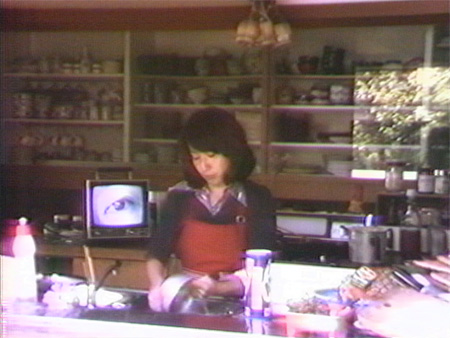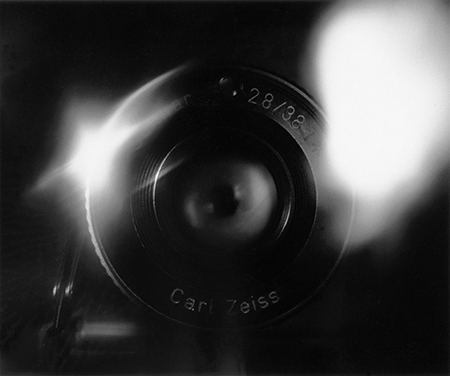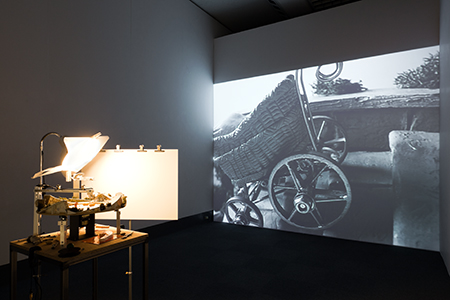
Negretti & Zambra, Crystal Palace, c.1854, Collection of Tokyo Photographic Art Museum
TOP Collection: A Genealogy of “Peep Media” and the Gaze
Jul. 19—Oct. 15, 2023
- Jul. 19—Oct. 15, 2023
- Closed Mondays (except when Monday falls on a holiday, in which case the museum is open and closed the following day)
- Admission:Adults ¥700 (560)/College Students ¥560 (440)/High School and Junior High School Students, Over 65 ¥350 (280) *Prices in parenthesis apply to groups of 20 or more. (Reservation is required.) , admission is free for grade school children or younger; junior high school students living or attending schools in the Tokyo metropolitan area and holders of Japan’s disability identification cards (shogaisha techo) together with two caregiver, and holders of the museum’s annual passport (check the Passport benefits at a glance)
The Tokyo Photographic Art Museum is delighted to hold its TOP Collection series of exhibitions introducing the museum’s collection. This event in that series focuses on our collection’s rich body of works and reference materials on the history of imaging and photography. It introduces the devices that made peeping possible, the images produced with them, and the great variety of styles that artists, their imaginations expanded by the act of peeping, created.
The camera was invented as a device for photographing still and moving images; cameras can thus be called peep media. The camera obscura, ancestor of the camera as we know it, is an utterly dark box (or room) with a pinhole in one of its walls, to cast an image of the outside scene on the opposite wall. Later, the pinhole was replaced by a lens, and the box became more compact, reaching a size that made it portable. Another visual device with a structure that reversed the camera obscura was used for viewing pictures through a lens: the peep box or peepshow. Many formats for peepshows were devised, and they became a popular form of entertainment.
Variations on peep media include optical devices such as the microscope and telescope, equipment such as the stereoscope for three-dimensional viewing of pictures, and the Kinetoscope and other equipment for creating motion pictures. The invention and widespread adoption of these devices supported the birth of new pictures, images never seen before, and gave rise to countless styles. Peep media have formed not just the media environment around us today but also the formal conditions for photography and video imaging. With this exhibition, we explore the genealogy of peep media and the gaze, as it is carried on today.
Chapter 1. The Delights of Peeping
Unknown, Camera obscura (La chambre noire), made in France, 19th century, Wood
Unknown, Book-shaped optical box (Boîte d'optique), made in France, 19th century, Wood
Unknown, Paper peepshow (An Authentic View of Great Industrial Exhibition Palace of 1851), made in Germany, 1851, Hand-colored lithograph
Unknown, Perspective View (View of the superb Westminster Bridge over the Thames and part of the city of London from the North side), c.1850, Hand-colored engraving
Chapter2. The Eye That Observes
William Benjamin Carpenter, The Cross Section of a Spine of a Sea Urchin, 1848–1849, Daguerreotype

Eadweard Muybridge, Horse and Man from the series The Attitudes of Animals in Motion, 1878–1879, Albumen print
Harold Eugene Edgerton, 30 Bullet Piercing an Apple, from the series Ten Dye Transfer Photographs, 1964, Dye transfer print ©2010MIT. Courtesy of MIT Museum
Chapter3. Seeing in Three Dimensions

Negretti & Zambra, Stereo graphoscope, c.1854, Wood
Shimooka Renjo, Children playing Baby-house. 5501, c.1866–1876, Albumen print
Chapter4. Motion Pictures
Charles-Émile Reynaud, Praxinoscope theatre, made in France, 19th century, Metal
Unknown, Phenakistiscope with a box, made in France, 19th century, Paper
Chapter5. Beyond Peep Media and the Gaze
Narahara Ikko, Inner Flower: Rose, Tineke, 1991, Gelatin silver print
Idemitsu Mako, Another Day of a Housewife, 1977, Single-channel video
Onodera Yuki, No.1 from the series Camera, 1997, Gelatin silver print
Ito Ryusuke, Odessa's Steps, 2006, Single-channel video installation
Organized by Tokyo Metropolitan Government, Tokyo Photographic Art Museum operated by Tokyo Metropolitan Foundation for History and Culture

